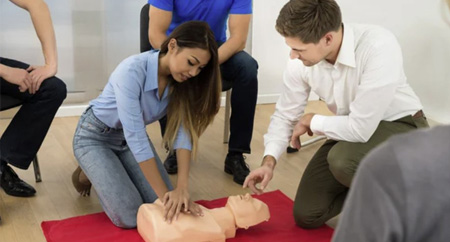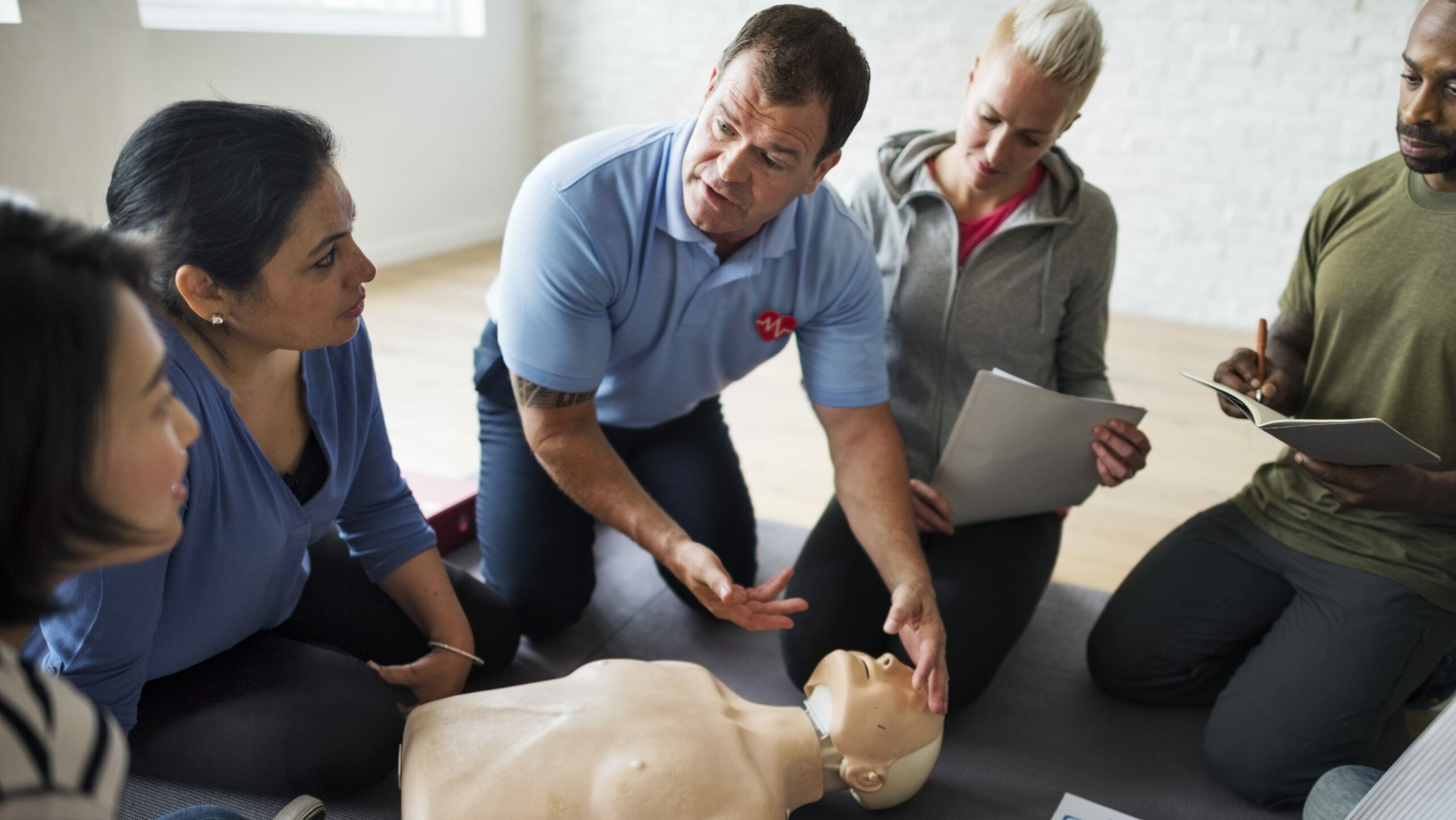Introduction
In an unpredictable globe, recognizing how to conserve a life can be the most powerful ability one might have. Cardiopulmonary resuscitation, typically referred to as CPR, is an important device in emergency situation scenarios where someone's heartbeat has quit. It's crucial for not just healthcare professionals yet also for man in the streets who want to make a difference. This comprehensive post looks into the subtleties of CPR, including its value, methods, and the comprehensive training supplied in mouth-to-mouth resuscitation courses.
Understanding mouth-to-mouth resuscitation: The Lifesaving Abilities Instructed in Mouth-to-mouth Resuscitation Courses
CPR is more than just a series of compressions and breaths; it is a lifesaving strategy that incorporates understanding with useful abilities. Recognizing CPR entails identifying when it is essential and implementing the suitable actions efficiently. The main objective of mouth-to-mouth resuscitation is to maintain blood circulation to essential body organs until specialist clinical help arrives.
Why Is Understanding CPR Important?
Lifesaving Potential: One of one of the most compelling factors to find out mouth-to-mouth resuscitation is its capacity to save lives. According to the American Heart Organization (AHA), immediate CPR can increase or even triple a sufferer's chance of survival after cardiac arrest.

Common Occurrences: Cardiac arrests can happen anywhere-- at home, work, or public places. Having people trained in mouth-to-mouth resuscitation enhances the possibility of punctual assistance.
Empowerment: Understanding mouth-to-mouth resuscitation encourages individuals with the self-confidence and capability to act decisively during emergencies.
Community Impact: A community furnished with people trained in emergency treatment and mouth-to-mouth resuscitation develops much safer atmospheres for everyone.
What Are the Objectives of an Emergency Treatment Course?
First help programs commonly intend to gear up participants with essential abilities required in emergencies:
- Understanding Standard Life Support (BLS): Individuals find out about air passage monitoring, taking a breath assistance, and flow restoration. Identifying Emergencies: Training consists of acknowledging different emergencies like choking, drowning, or heart attacks. Learning Techniques: Practical sessions concentrate on hands-on understanding of methods such as upper body compressions and rescue breaths.
Types of mouth-to-mouth resuscitation Courses Available
There are various sorts of mouth-to-mouth resuscitation courses readily available relying on individual requirements:
Basic Life Assistance (BLS):- Aimed at healthcare providers and professionals. Covers adult, child, and baby resuscitation techniques.
- Designed for nonprofessionals or non-healthcare professionals. Emphasizes first aid fundamentals together with adult/child/infant resuscitation.
- Convenient choice for those with tight schedules. Often consists of video demos however does not have hands-on practice unless integrated with in-person sessions.
- Tailored programs developed for details workplace environments. Focus on relevant circumstances employees might encounter.
What Abilities Are Covered in Emergency Treatment and CPR Courses?
1. Acknowledging Emergencies
Participants find out just how to identify crucial scenarios calling for treatment quickly.
2. Performing Chest Compressions
Chest compressions are essential in maintaining blood flow throughout heart arrest.
3. Providing Rescue Breaths
Breathing strategies make sure oxygen reaches essential organs when a person can not breathe independently.
4. Making Use Of an Automated External Defibrillator (AED)
Training typically consists of exactly how to utilize an AED properly, which can recover regular heart rhythms.
5. Handling Choking Incidents
Students are educated how to perform stomach thrusts on choking sufferers both adults and infants.
6. Managing Various Other Clinical Emergencies
Courses might likewise cover various medical situations like strokes Visit this page or extreme sensitive reactions.
The Significance of Certification After Completing a Course
Obtaining a first aid certification after completing your training is vital for numerous factors:

- It validates your skills and knowledge. Many work environments require certification for particular roles. It builds reputation among peers and employers regarding your readiness to respond in emergencies.
Detailed Description of Key Techniques Taught in Mouth-to-mouth Resuscitation Courses
Chest Compressions: The Structure of CPR
Chest compressions are arguably one of the most critical element of doing efficient cardiopulmonary resuscitation because they circulate blood with a sufferer's body also when their heart has quit beating:
- Place your hands at the facility of the person's chest. Keep your arm joints directly while pressing down set at a price of 100-- 120 compressions per minute. Allow full breast recoil between compressions for ideal blood flow.
Rescue Breaths: Providing Oxygen When It Issues Most
After every 30 breast compressions, it is critical to give 2 rescue breaths if trained:
Open the air passage by turning the head back slightly. Pinch the nose shut while sealing your lips around their mouth. Give 2 breaths lasting regarding one second each while looking for chest rise prior to proceeding compressions.Recognizing Cardiac Arrest vs Various Other Emergencies
Understanding when to initiate CPR can be difficult but is critical:
- Look for unresponsiveness coupled without regular breathing or pulse-- this shows heart arrest. In cases where there is still taking a breath however it appears uncommon (wheezing), call emergency services promptly before waging rescue efforts.
Using AEDs Efficiently Throughout Emergencies
An Automated External Defibrillator affordable CPR courses (AED) offers clear instructions by means of visual prompts and voice commands:
Turn on the AED as soon as you recover it from its case. Attach pads according to pictures on them-- one pad needs to go above the best nipple while one more goes below the left armpit. Ensure no person touches the victim while assessing their heart rhythm; provide shock if advised by tool prompts.FAQs Concerning Comprehending CPR
Q1: How long does it require to finish a first aid course?
A: The majority of emergency treatment courses last between 4-- 8 hours relying on web content deepness; sophisticated certifications may require longer sessions topped numerous days.
Q2: Can I take an emergency treatment course online?
A: Yes! Several organizations provide blended knowing alternatives where academic components are completed online complied with by useful Article source assessments in person.

Q3: Is qualification legitimate indefinitely?
A: No; accreditations commonly need renewal every two years due to improvements in guidelines and techniques within emergency reaction training sectors like those included with first aid courses or BLS qualifications specifically focused on reliable care delivery methods throughout crises experienced across various atmospheres-- from homes with workplaces!
Q4: Will I discover how to aid kids or infants?
A: Yes! The majority of quality training courses cover methods customized particularly toward pediatric individuals alongside adult-focused training modules guaranteeing more comprehensive applicability throughout age groups during emergencies experienced daily within our communities!
Q5: What are some typical false impressions about executing CPR?
A: A widespread misconception is that you must not try any form until skilled specialists show up; nevertheless acting promptly can dramatically boost results if initiated properly utilizing details gained through structured programs like those used within Emergency treatment & & CPD settings!
Q6: Do I require any type of special devices for my training session?
A: Typically talking all needed materials will be offered by instructors including manikins used method situations including both compression-only versions alongside standard rescue breath styles making certain detailed understanding obtained throughout coursework embarked on within designated timeframes set aside appropriately based upon individual schedules/preferences!
Conclusion
In final thought, understanding cardiopulmonary resuscitation (CPR) furnishes individuals with life-saving abilities that can imply the difference between life and death during emergency situations entailing cardiac arrest or other health and wellness dilemmas calling for prompt treatment before expert aid arrives! Enrolling on your own right into accredited emergency treatment training courses guarantees you're prepared must an unfavorable occasion happen around you-- equipping not only personal confidence but additionally fostering area durability total! Whether you select on-line classes combined discovering strategies conventional class configurations ultimately leads in the direction of gaining beneficial insights enhancing feedback capabilities reacting properly among uncertainty faced on a regular basis browsing uncertain conditions inherent daily living experiences shared jointly across culture today!
By prioritizing education bordering these vital subjects we develop more secure settings fostering more powerful links between people making entire areas healthier holistically moving forward together united actively in the direction of accomplishing common objectives envisioned throughout shared journeys ahead loaded guarantee hope brighter futures await us all-- one heartbeat at time!